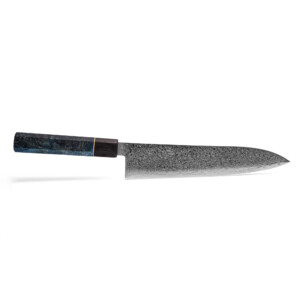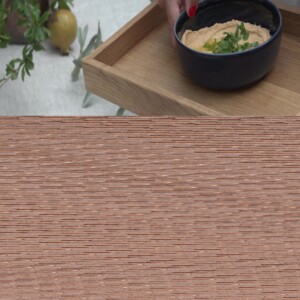It’s a messy world and we all get the urge to try and organise what’s around us. How to get going around this smartly?
The solution: minimalism

Although it may feel like it, minimalism is not a modern lifestyle choice. Its roots go back as early as the 6th century BC. Some of history’s most venerated religious and philosophical figureheads such as Confucius and Lao Tzu have prescribed a life poor in material possessions but rich in meaning. They advocated for clearing our overwhelmed minds by organising our physical spaces first – our cluttered homes.
For modern-day proponents of the movement, Joshua Fields Millburn and Ryan Nicodemus, most stuff is superfluous to leading a content, harmonious and meaningful life. They summarise minimalism as a tool to rid yourself of life’s excess in favour of focusing on what’s important—so you can find happiness, fulfilment, and freedom. They’re also keen to stress that contrary to popular belief, the essence of minimalism is about more, not less: more time, more space, more freedom.
High ceilings, natural light and a neutral colour pallet mixed with the nature at its best (plants, natural fabrics, wooden and stone elements) create a feeling of space, a key characteristic of minimalistic interiors. Popularised and made widely accessible by Ikea, simple and sleek furniture and design forms gained a lot of fans in European and American homes.
What’s interesting, despite their vast distance, Japan and Sweden have similar design sensibilities. Like Scandinavia, Japan upholds design principles that use natural materials, clean lines, and straightforward construction or cut. Both cultures favour a cheerful, unadorned aesthetic that we at Oishya love and endorse so much. Simplicity and functionality are at its core of anything we source, produce and sell.
Why minimalistic, simple interior design is good for your wellbeing
Minimalism is perhaps the only design philosophy that has such profound benefits for its followers’ physical and mental wellbeing. In the context of design, the roots of minimalism are strongly connected to the East, especially Japan where the influence of Zen Buddhism runs deep. Eastern architecture has had a huge influence on the West over the last two centuries.
Intensive de-cluttering of our space is not merely undertaken for the purpose of achieving a desired aesthetic, but as a means to embark on a cathartic personal journey. Japanese even have a name for it – Danshari. Its three kanji characters signify, respectively, refusal, disposal and separation.
You can simply translate it as cleaning or tidying up, but there are psychological and even religious dimensions, deriving in part from Buddhism and yoga, which suggest the disposal of mental, along with physical burden.
We can neglect objects that are of no use to us for months, even years, allowing them to gather dust and take up valuable mental and physical space. The same goes for ways of thinking that are outdated and harmful to us. A fearfulness and tentativeness surround minimalism, with thoughts of emptiness once you’ve stripped everything back. You don’t need to go to extreme lengths of limiting yourself to 100 items, but small steps taken to free yourself from the weight of surplus items can lead to a profoundly liberating state of mind.
How do you create minimalist interior design
A de-cluttered interior can bring serenity and calm. If you’ve ever read The Life-Changing Magic of Tidying by Japanese lifestyle consultant Marie Kondo, then you know by now that the most effective criteria to use when deciding what to keep and what to discard in your home is to determine whether or not something sparks joy in your heart when you touch it. If it does, it’s worth keeping. If it doesn’t, get rid of it without giving it a second thought. A commitment to minimalism requires us to be more thoughtful about the objects that we invest in, and consequently the way that we consume. What will last? What will serve? What will bring joy? Am I buying something out of impulse or because I really need it for my existence? Am I trying to fill some mental emptiness with the help of the object? Form, function, colour and material are of paramount importance. Try to find items with elegant proportions that echo architectural features to give the space a sense of harmony. Earthy materials such as wood foster a connection to the natural world, but manmade textures such as concrete are also synonymous with minimalist interiors. If cement feels too industrial to use in large architectural elements, accessories such as linen bedding or linen home accessories are a great substitute.
Minimalist interiors are characterised by a sense of order, simplicity, calm and restraint. Natural elements such as light and a sense of space are brought to the fore, framed by architectural details such as beams, windows and pitched ceilings. However, it’s important to introduce some features to prevent your space from becoming an overly sterile atmosphere: plants, decorative colourful accents such as discreet prints can be useful to add life, texture and focus.
Home is a place where you spend cheerful moments and relax
For some, the idea of converting their entire living space into a temple of minimalism feels unachievable. If that rings true then it might be more manageable to commit to making at least one room a simple, clutter-free zone. A minimalist interior, or a single room, helps keep one grounded in the present and protect us from being drowned in toxic stimuli.
It promotes a thoughtfulness towards the objects around you and the space you inhabit. If nothing else, a minimalist approach makes finding home keys so much easier on a hectic Monday morning.





























